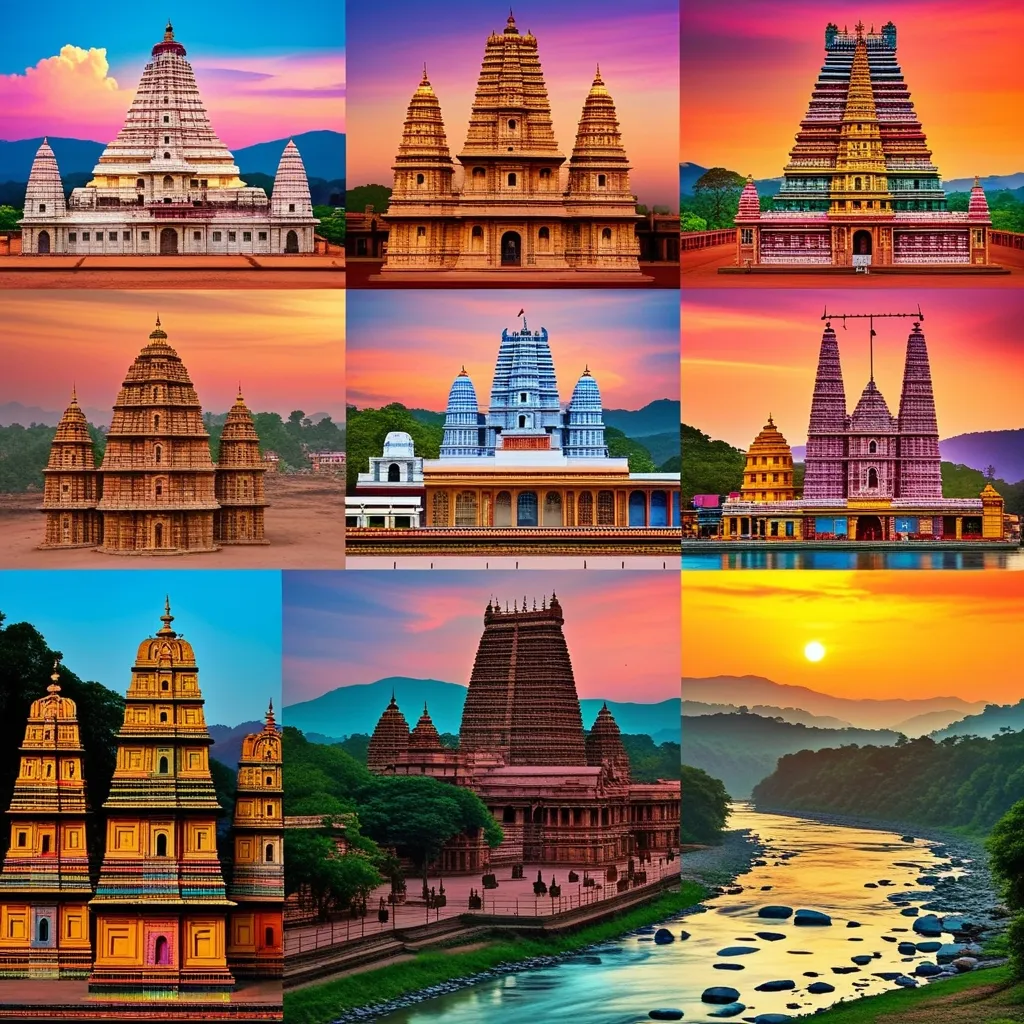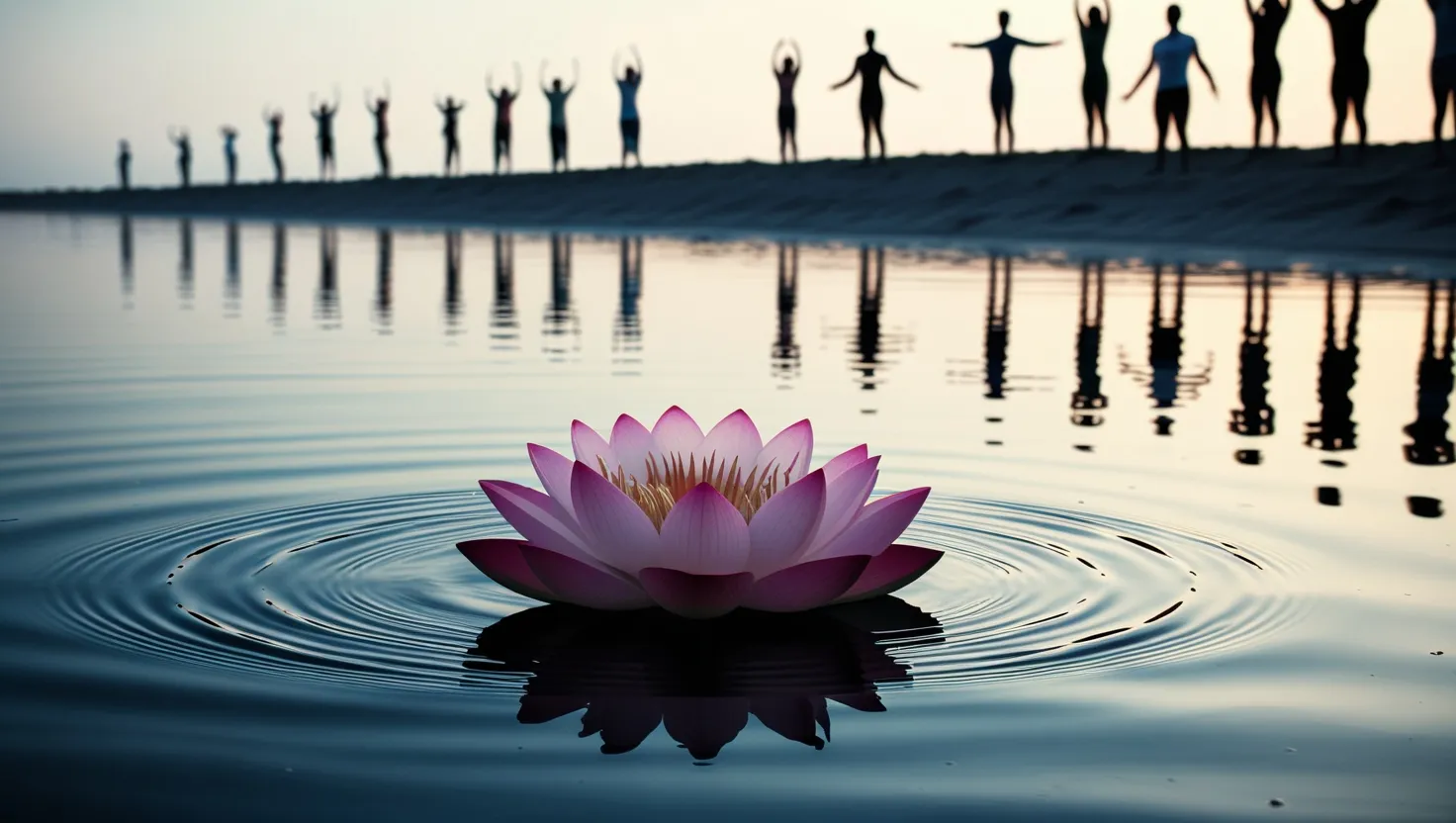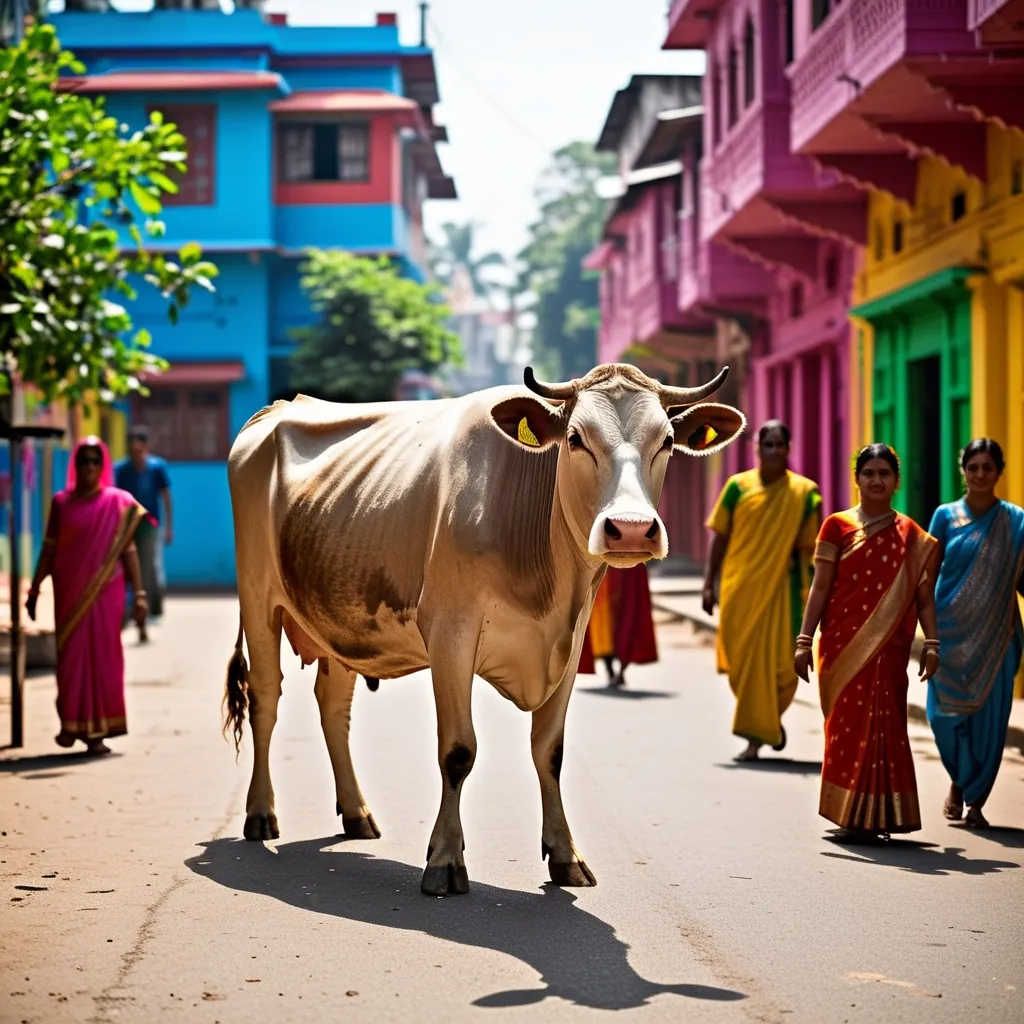Exploring India’s Sacred Spaces: 10 Must-Visit Hindu Temples
India’s spiritual landscape is dotted with countless temples, each telling a unique story of faith, culture, and history. From ancient architectural marvels to modern spiritual hubs, these sacred spaces offer a glimpse into the heart of Hinduism. Let’s embark on a journey through 10 of India’s most awe-inspiring Hindu temples.
Kashi Vishwanath: Where Shiva Resides
Nestled on the banks of the holy Ganges in Varanasi, Kashi Vishwanath Temple stands as a beacon of devotion. This ancient shrine, dedicated to Lord Shiva, has weathered centuries of change, yet its spiritual essence remains untouched. The temple’s golden spire, visible from afar, seems to beckon pilgrims from across the world.
As you approach the temple, the air fills with the heady scent of incense and the rhythmic chanting of devotees. The narrow lanes leading to the temple complex are a sensory overload - colorful shops selling prayer items, the occasional holy cow ambling by, and the constant buzz of devotees.
Inside, the sanctum sanctorum houses the jyotirlinga, believed to be one of the holiest manifestations of Shiva. The energy here is palpable, with devotees pressing forward to catch a glimpse of the deity. It’s not just a sight to see; it’s an experience that touches the soul.
Meenakshi Amman: A Colorful Ode to the Divine Mother
Down south in Madurai, the Meenakshi Amman Temple rises like a vibrant dream against the skyline. This temple is a celebration of color, art, and devotion. The moment you set eyes on its towering gopurams (gateway towers), you’re transported to a world where myth and reality intertwine.
Each of the 14 gopurams is a masterpiece, adorned with thousands of colorful figurines depicting gods, goddesses, and mythological tales. It’s like a giant, three-dimensional storybook of Hindu lore. As you walk around the temple, you’ll find yourself constantly looking up, marveling at the intricate details.
The temple is dedicated to Meenakshi, an avatar of Goddess Parvati, and her consort Sundareshwar, a form of Lord Shiva. The love story of these divine beings is celebrated annually in a grand festival that draws millions. Even on regular days, the temple buzzes with activity - from early morning rituals to late evening prayers.
Akshardham: Where Tradition Meets Modernity
In the bustling capital of New Delhi, Akshardham Temple stands as a testament to the enduring nature of Hindu spirituality. Built in 2005, it’s a relatively new addition to India’s temple landscape, but it has quickly become one of the most visited sites in the country.
The temple’s architecture is a blend of several Indian styles, resulting in a structure that’s both traditional and contemporary. The use of pink sandstone and white marble gives it a warm, inviting glow, especially during sunset.
What sets Akshardham apart is its use of technology to spread spiritual messages. The temple complex includes an IMAX theater, musical fountains, and exhibitions that use modern storytelling techniques to share ancient wisdom. It’s a place where grandparents and grandchildren can find common ground in their spiritual exploration.
Jagannath: The Lord of the Universe
Puri, a coastal town in Odisha, is home to the famous Jagannath Temple. This ancient shrine is one of the char dhams, the four most sacred pilgrimage sites for Hindus. The temple is dedicated to Lord Jagannath, a form of Krishna, along with his siblings Balabhadra and Subhadra.
The most famous event associated with this temple is the annual Rath Yatra, or chariot festival. Millions gather to watch as massive wooden chariots carrying the deities are pulled through the streets. It’s a spectacle of devotion that has to be seen to be believed.
Even when it’s not festival time, the temple is a hub of activity. The main shrine, with its distinctive curvilinear spire, is surrounded by smaller temples and halls. The air is filled with the sound of bells, chants, and the occasional roar of the nearby sea.
Kamakhya: The Bleeding Goddess
Perched atop Nilachal Hill in Guwahati, Assam, the Kamakhya Temple is shrouded in mystery and ancient tantric practices. This temple is one of the most important Shakti Peethas, sites associated with the goddess Sati.
What makes Kamakhya unique is its celebration of the feminine divine in all its forms. The temple is dedicated to the goddess Kamakhya, an aspect of Sati. Legend has it that Sati’s yoni (womb) fell here when her body was cut into pieces by Vishnu’s discus.
The most intriguing aspect of this temple is the Ambubachi Mela, a festival that celebrates the annual menstruation of the goddess. During this time, the temple remains closed as the goddess is believed to be going through her menstrual cycle. It’s a rare celebration of a natural feminine process in a religious context.
Kedarnath: A Himalayan Pilgrimage
Nestled high in the Himalayas of Uttarakhand, the Kedarnath Temple is a test of devotion and endurance. The journey to this remote shrine involves a challenging trek through stunning mountain landscapes. But for the faithful, every step is worth it.
The temple, dedicated to Lord Shiva, is believed to have been built by the Pandavas of the Mahabharata epic. Its stone walls have withstood centuries of harsh mountain weather, standing as a testament to the enduring nature of faith.
The backdrop of snow-capped peaks adds to the temple’s otherworldly feel. As you stand in front of the ancient shrine, surrounded by the majesty of the Himalayas, it’s easy to feel a connection to something greater than yourself.
Lingaraj: The King of Lingas
In the temple city of Bhubaneswar, Odisha, the Lingaraj Temple stands as a masterpiece of Kalinga architecture. Dedicated to Harihara, a combined form of Shiva and Vishnu, this temple represents the syncretic nature of Hinduism.
The temple’s 54-meter-high deul (sanctum tower) dominates the skyline, its intricate carvings telling stories of gods and myths. The complex houses over 150 smaller shrines, each with its own significance and beauty.
What’s fascinating about Lingaraj is how it blends different traditions of Hinduism. It’s a place where devotees of Shiva and Vishnu come together, reminding us of the underlying unity in Hindu philosophy.
Triveni Ghat: Where Rivers and Faiths Meet
While not a temple in the traditional sense, Triveni Ghat in Rishikesh is a sacred spot that deserves a place on this list. It’s believed to be the confluence of three holy rivers - the Ganges, the Yamuna, and the mythical Saraswati.
The ghat comes alive during the evening aarti ceremony. As the sun sets, thousands of tiny lamps are set afloat on the river, creating a mesmerizing spectacle. The air fills with the sound of bells and chants, creating an atmosphere of profound spirituality.
Rishikesh, known as the yoga capital of the world, attracts spiritual seekers from all over. Triveni Ghat embodies this spirit of universal spirituality, welcoming all who come seeking inner peace.
Somnath: The Eternal Shrine
On the western coast of Gujarat stands the Somnath Temple, a symbol of resilience and faith. This temple has been destroyed and rebuilt several times throughout history, each time rising again like a phoenix from the ashes.
The current structure, built in the Chalukya style, is a sight to behold. Its shikhara (spire) seems to touch the sky, while intricate carvings adorn its exterior. The temple’s location by the Arabian Sea adds to its mystical aura.
Somnath is one of the twelve jyotirlingas, making it a major pilgrimage site for Shiva devotees. But even for non-believers, the temple’s tumultuous history and stunning architecture make it a must-visit.
Vaishno Devi: The Mountain Mother
Our spiritual journey ends at the Vaishno Devi Temple, nestled in the Trikuta Mountains of Jammu and Kashmir. This shrine, dedicated to a form of the goddess Durga, is one of the most visited pilgrimage sites in India.
The journey to Vaishno Devi is as important as the destination. Pilgrims trek up the mountain, often chanting “Jai Mata Di” (Victory to the Mother Goddess). The path winds through beautiful forests and offers stunning views of the surrounding mountains.
The temple itself is located in a cave, where the goddess is worshipped in the form of three natural rock formations called pindies. The atmosphere inside the cave is charged with devotional fervor, with pilgrims waiting for hours for a few moments in the presence of the goddess.
Each of these temples offers more than just a glimpse of Hindu spirituality. They are living, breathing entities that continue to shape the faith and culture of millions. Whether you’re a devoted pilgrim or a curious traveler, these temples offer experiences that will stay with you long after you’ve left their sacred grounds.
From the ancient stones of Kashi Vishwanath to the modern marvels of Akshardham, from the colorful towers of Meenakshi Amman to the austere beauty of Kedarnath, these temples showcase the diversity and depth of Hindu traditions. They remind us that spirituality in India is not just about quiet contemplation, but also about vibrant celebrations, artistic expressions, and a deep connection with nature.
So, pack your bags, open your heart, and set out on a journey through India’s sacred spaces. Who knows what revelations await you in the shadow of these ancient towers, by the banks of holy rivers, or atop sacred mountains? One thing’s for sure - you’ll return with stories to tell and memories to cherish for a lifetime.






